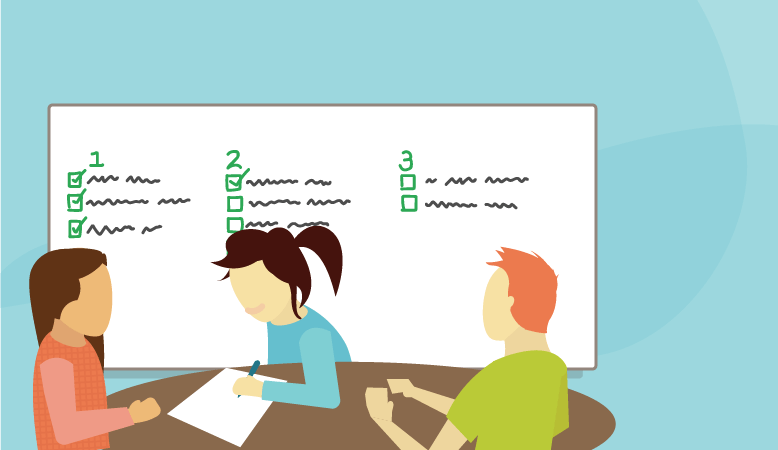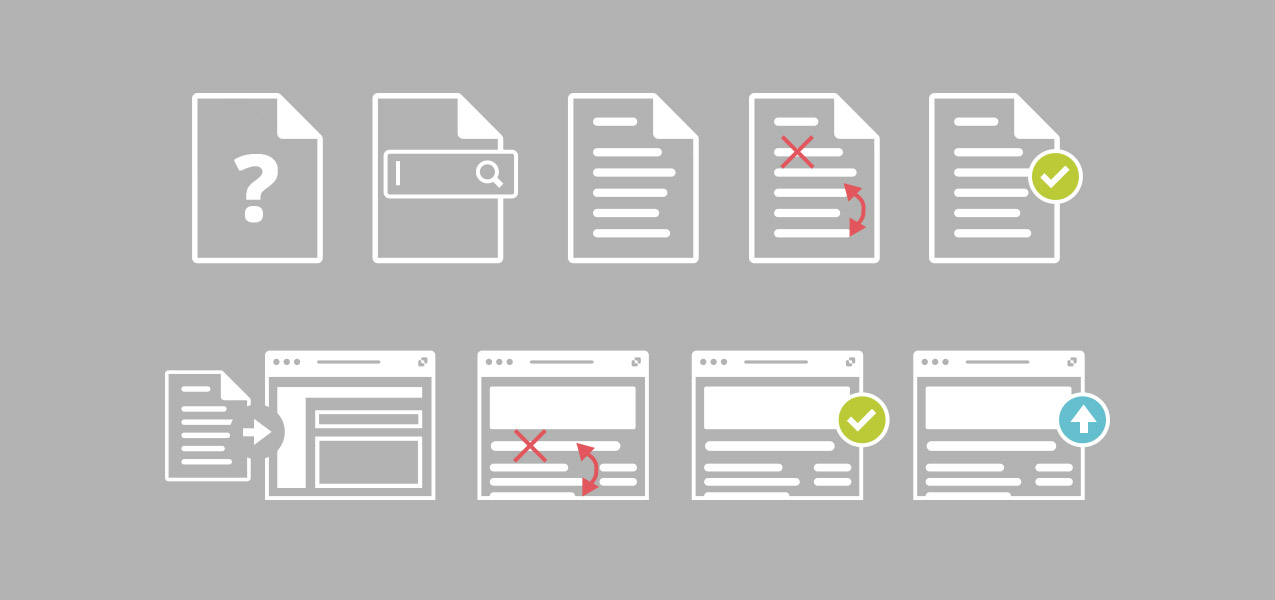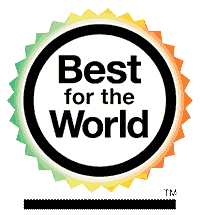How to Create a Content Governance Plan

In this post, we discuss how to successfully create—and implement—a content governance plan that helps you build capacity and sets your organization up for long-term success.
An effective content governance plan is critical to the success of any organization’s content strategy. Sticking to it, however, is challenging: things go off the rails when real-world problems get in the way of your best laid plans.
For instance, your team has planned out the coming year’s content with several new campaigns scheduled each quarter:
- Run some great customer promotions.
- Develop stories around a new product line.
- Engage influencers on social media.
- Reach a brand new audience for the first time.
However, then things get real:
- Four different departments want their products and programs on the website’s homepage.
- Your new assistant just sent an off-brand tweet that might give customers the wrong impression.
- A scheduled promotion conflicts with the company’s annual trade show.
- And you still have day-to-day tasks to contend with.
What do you do? Here’s where a good content governance plan can help.
What is Content Governance?
Content governance is a set of practices to create, publish, manage, distribute, and scale content in a real business environment. Content governance defines how content is reviewed, who is empowered to make editorial planning decisions, what to do after content is published. Also, content governance addresses stale, non-performing, or outdated content as well.
Finally, good content governance practices can make or break digital marketing success.
Digital Transformation Requires Good Governance
Digital transformation is the process of using digital technologies to create new (or modify existing) business processes, products, programs, or services. Also, digital transformation is used to shift organizational culture, improve customer experiences, and meet always-evolving business and market requirements.
Organizations across sectors are undergoing this change on a monumental scale. The ramifications are huge.
For many Mightybytes clients, digital transformation manifests in an organization’s relationship with content:
- Fast Publishing: Access to digital tools like content management systems allow them to create, publish, and promote content faster than ever before.
- Real-time Access: Social media and other internet-enabled communications channels give customers, donors, and other stakeholders real-time access to organizations in unprecedented ways.
- Improved Workflows: Transformation requires new workflows, processes, skills, and resources.
- Better Sustainability: Improving content performance efficiency helps content teams reduce digital waste, meet their goals faster, and collaborate more effectively.
- Resources & Capacity: Finally, many organizations are simply not equipped to effectively navigate this rapid shift. This presents many different challenges.
Content Governance: Common Challenges
First, it’s likely no surprise that content for digital projects challenges our clients most. To address this, we train them to better understand the workload involved in implementing a successful content strategy over time, which includes:
- Content mapping
- Content creation workflows
- Editorial guidelines
- Content migration
- Search engine optimization
- Content audits
- Calendar planning
Plus, there are a host of other content-related tasks that play important roles as well.
Also, these challenges often become even more apparent after a digital product or service launches: organizational change management is typically necessary to maintain a long-term content strategy alongside a successful promotion and distribution strategy. This overwhelms inexperienced teams.
At scale, managing content becomes unwieldy, especially for organizations with many departments contributing content. It is critical to implement—and enforce—good content governance practices in this fast-paced, always changing environment.
Designing an Impactful Content Governance Plan
Next, assuming you already have a good content strategy in place, how do you set yourself up for long-term success before writing your first post? You can start by designing a content governance plan. Successfully manage the publishing process and your team will better understand the bigger picture while also learning how content initiatives could impact them day-to-day.
More importantly, a content strategy without checks and balances quickly becomes unwieldy and costly. Plus, content creators, outside vendors, and internal stakeholders will appreciate having a set of guidelines to work from.
Elements to Include in Your Plan
Here are some things to think about as you consider implementing a content governance plan:
- Manage Office Politics: Everyone wants their pet project on the homepage. Implement a prioritization process when working with stakeholders to ensure fairness and consistency.
- Establish Editorial Guidelines: Editorial guidelines help your team understand organizational standards, which makes your content more consistent.
- Accountability: Make sure everyone understands what they are responsible for.
- Clear Objectives: What purpose does your content serve for each communication channel? Clear objectives ensure that individual campaigns work toward larger organizational goals.
- Define Success: Before creating content, set out methods to measure success. What result are you looking for and how will you measure your progress over time? What are your KPIs?
- Prioritize Accessibility: Make sure the Web Content Accessibility Guidelines play a role in ongoing content governance. This will make your website easier to use for up to 15% of your audience. Plus, it could help you avoid a lawsuit.
- Prioritize Sustainability: Understanding success criteria will help you ‘prune’ outdated or underperforming content to keep your site lean, efficient, and well-organized. Not sure where to start? Schedule regular content audits.
- Flexibility: Finally, make sure your content governance plan is flexible enough to account for unexpected hurdles. Embrace change and continuous learning. This will help with organizational agility.
Create Editorial Guidelines
Next, even if you’re a content team of one, consistency is key. Editorial guidelines streamline the writing and editing process by providing clear content standards that anyone can follow.
Here are some things to consider when crafting editorial guidelines:
- What style guide will serve as the basis for your guidelines? AP Stylebook, Chicago Manual of Style, MLA Formatting and Style Guide are the most common. Which works best for you?
- What is your company’s voice and tone? Is it professional and academic or casual and conversational?
- Do you have any industry terms or ambiguous grammatical rules that you can identify?
- How should content appear on your website? Will you publish large blocks of text or are frequent bulleted lists and photos or illustrations more your style? If the latter, how will you ensure content teams can properly optimize images to keep page weight down?
- Finally, how does the editing process work at your organization?

Design a Sustainable Content Workflow
Defining a clear content workflow can set content creators and editors up for success. How will you lay out the exact steps content creators should follow to successfully publish a piece of content?
For example, a typical workflow can include many steps:
- Hypothesis: What story do you plan to tell? How will it engage your audience? How will you measure its success over time?
- Research: Collect research to support (or refute) your hypothesis.
- Outline: Create a page brief that outlines your story, ensuring that key points are conveyed; review with editors, if necessary.
- Write: Create a first draft based on your outline.
- Review: If you have a formal editorial team, submit your draft for review; if not, find a subject matter expert to play this role.
- Visuals: Find illustrations or photos that match style guidelines; edit/resize as needed.
- Edit/Proof: Good content is edited multiple times—once for story content, once for style/grammar, and a final proofread.
- Approve: Get the thumbs up to publish.
- Format: Input your content to a content management system (CMS), previewing as needed and adding any SEO-specific data such as internal links, meta descriptions, and so on.
- Final Proof: Preview one final time, double-checking all your publish settings.
- Publish: Finally, release your hard work to the internet!
Defining a good workflow will build consensus and manage expectations. You don’t want any unnecessary confusion around how best to achieve your organization’s content goals.
What Makes a Content Workflow Sustainable?
Next, content can quickly overwhelm a marketing or communications team, especially if your organization has many stakeholders. Perhaps your content workflow only needs six steps as opposed to the eleven noted above. Or maybe your writer and editor are the same person. Figure out the best ways to keep your content workflow process—and, as a result, your website—as lean and efficient as possible.
Similarly, helping users reach the content they need and answer their questions quickly and effectively is part of a broader sustainable web design strategy as well.
To design more sustainable content workflows, start small, learn from your mistakes, measure what’s working and what’s not, then course-correct as needed. This will help you improve efficiency and collaboration.
Workflow Sustainability Considerations
Consider the following when assessing your content workflow’s overall sustainability:
- Prepare vs. Plan: While it’s good to have a plan, it’s better to be prepared; create all plans with the understanding that they will change, and that’s okay.
- Know Your Resources: A content plan created for a team of six when you have a team of two serves no one; plan for what your resources will support.
- Collaborate: Workshop processes with everyone in the same room, if possible; it will strengthen your team’s bond while also building consensus quickly.
- Embrace Efficiency: Always be on the lookout for new ways to streamline your processes and practices. Measure performance to help guide this process.
- Continuous Learning: Regularly assess what you learned from a particular mistake or process; re-evaluate how you would change things for the next cycle.
Post-Publishing Content Governance
Next, common questions arise once your team has published a decent amount of content over time:
- What happens after a post goes live?
- How will you promote or otherwise distribute your content?
- Is the post evergreen content that never goes out of date?
- Or is it time-specific and will require updates, as in the case of event-related content?
- If, after publishing a post, it doesn’t perform to expectations, how should you improve it?
- If, after improvement, it’s still underperforming, how do you delete it?
- What about broken links or poorly chosen keywords?
This is a great opportunity to apply sustainability principles to your content governance process. To answer these questions, consider the following:
Distributing and Promoting Content
First, publishing content doesn’t guarantee views or audience engagement. A proper governance plan accounts for this reality by defining how posts are distributed, whether that’s through your organization’s newsletter, social media, or any other platform.
Moreover, a good content governance plan should also identify potential promotion partners who can help you better meet your content marketing goals.
Measuring Impact
Next, a good data-driven measurement strategy will help you quickly understand whether or not a content strategy produces—and maintains—results. Define and refine an actionable methodology for tracking content performance.
This is a more sustainable approach to good long-term content governance.
Maintaining Performance Over Time
More importantly, content production is rarely a set it and forget it situation. You can often improve older post performance by adding new data, refreshing outdated information, or otherwise updating content.
And if this doesn’t work, prune it.
Putting Your Content Governance Plan Into Action
Finally, content governance is imperative to ensure content strategy success over time. When you take the time to lay out your workflow, assign accountability, and maintain performance, your content campaigns will be more unified, efficient to execute, and easier to measure.
With policies laid out, you’ll always have a guide to turn to when presented with ongoing challenges, like office politics and other material circumstances.



